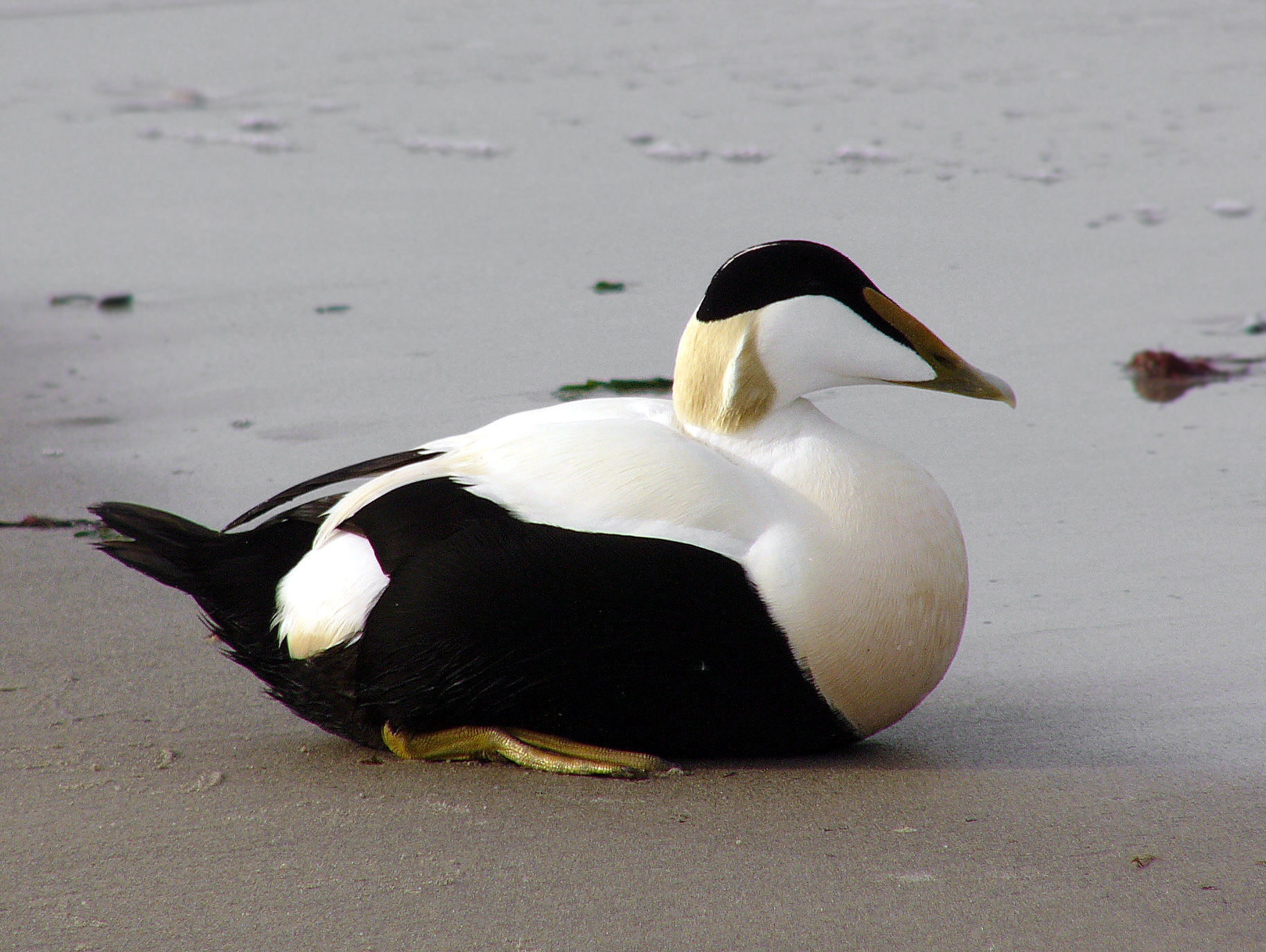
Common eider(Somateria mollissima)
Phylum —chordata
Class — aves
Order — anseriformes
Family — anatidae
Genus –somateria
Appearance
Measuring, on average, between 53 to 60 cm (21 to 24 inches) common eiders are the largest ducks in the northern hemisphere. Although the weight of common eiders differs depending upon the individual’s sex and the time of year, they average about 1800 grams.
Adult male common eiders are recognizable by their dramatic arrangement of black and white plumage. They are black on their underside and white on their back and forewings. The male common eider also has a predominantly white head, but it is crowned with black and they have a touch of light emerald green on the back and sides of their head. The adult female common eider is almost exclusively brownish or reddish-brown and is closely barred. Immature males begin their life grayish-brown in color, then become dusky with a white collar and eventually end up like their mature counterparts.
Habitat
Common eider populations nest mainly in the coastal high arctic regions of Canada and Siberia. Along the eastern coast of North America, common eiders breed as far south as Maine, and along the western coast of North America they breed as far south as the Alaskan Peninsula. It winters somewhat farther south in temperate zones, when it can form large flocks on coastal waters.
Behavior
Common eiders are migratory, they live and travel in large flocks which often number from tens to thousands of individuals. Common eiders dive to collect various oceanic organisms, often plunging anywhere from 3 to 20 meters into the water.
Diet
The diet of common eiders consists almost exclusively of mollusks, echinoderms, crustaceans, and a few fish.
Reproduction
Common eiders are monogamous. During the spring, courtship becomes very intense and lasts even after two common eiders have paired. This ensures a strong bond between the male and the female.Although many common eiders are already paired with a mate by the time they reach the breeding grounds, some do not pair until they get to the islands. Pairs of common eiders do not mate for life.
Nesting begins in early summer; common eiders return to breeding islands as soon as the ice begins to melt. It takes a couple of days for a pair to choose a nesting site and prepare it. The female common eider plucks down from her own body to line a nest, in which she lays four to five eggs, on average (range 2 to 8). After the second or third egg is laid, the female begins incubation. Incubation lasts for about 25 days and is only done by the female. Young fledge after 30 to 50 days.
Unlike most other seabirds, male common eiders do very little in raising the young. In fact, male common eiders leave to join male flocks once the female has begun incubation.
Common eiders can live 20 years, one of the longest lifespans among sea ducks.
Incaptivity
Eiders live and breed only in the wild. However, people have learned to interact with this bird, mainly to get valuable down, which eiders line their nests.
Every year, expeditions are sent to the breeding grounds of the eiders. Fluff collectors look for birds ' nests and carefully collect fluff. This can be done only before the chicks appear or after they leave the nest. The down in the nest is replaced by hay. The bird calmly returns to the nest after such a replacement and continues to hatch eggs.
 Russian
Russian
 English
English
























